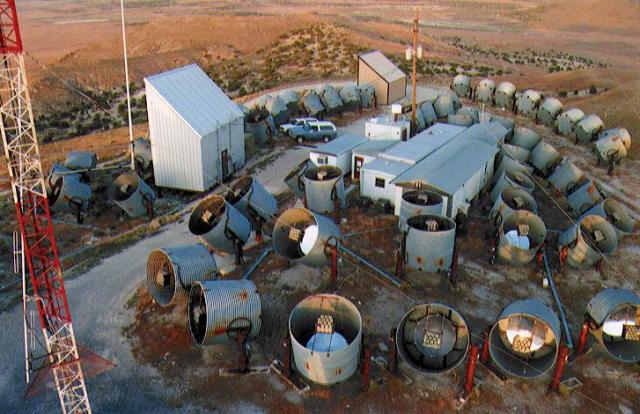Fly’s Eye detects record-breaking cosmic ray: 3.2 x 10^20 eV

The Fly's Eye Mirrors (Image: Courtesy of University of Utah)
On 15 October 1991 the HiRes Fly's Eye cosmic-ray detector in Utah, US, recorded the highest-energy cosmic ray ever detected. Located in the desert in Dugway Proving Grounds 120 kilometres southwest of Salt Lake City, the Fly's Eye detects cosmic rays by observing the light that they cause when they strike the atmosphere.
Cosmic rays are mainly (89%) protons – nuclei of hydrogen, the lightest and most common element in the universe – but they also include nuclei of helium (10%) and heavier nuclei (1%), all the way up to uranium. When they arrive at Earth, they collide with the nuclei of atoms in the upper atmosphere, creating more particles, which start a cascade of charged particles that can produce light as they fly through the atmosphere.
The charged particles of a cosmic ray air shower travel together at very nearly the speed of light, so the Utah detectors see a fluorescent spot move rapidly along a line through the atmosphere. By measuring how much light comes from each stage of the air shower, one can infer not only the energy of the cosmic ray but also whether it was more likely a simple proton or a heavier nucleus. The Utah researchers measured the energy of the unusual cosmic ray event in 1991 to be 3.2x1020 eV.